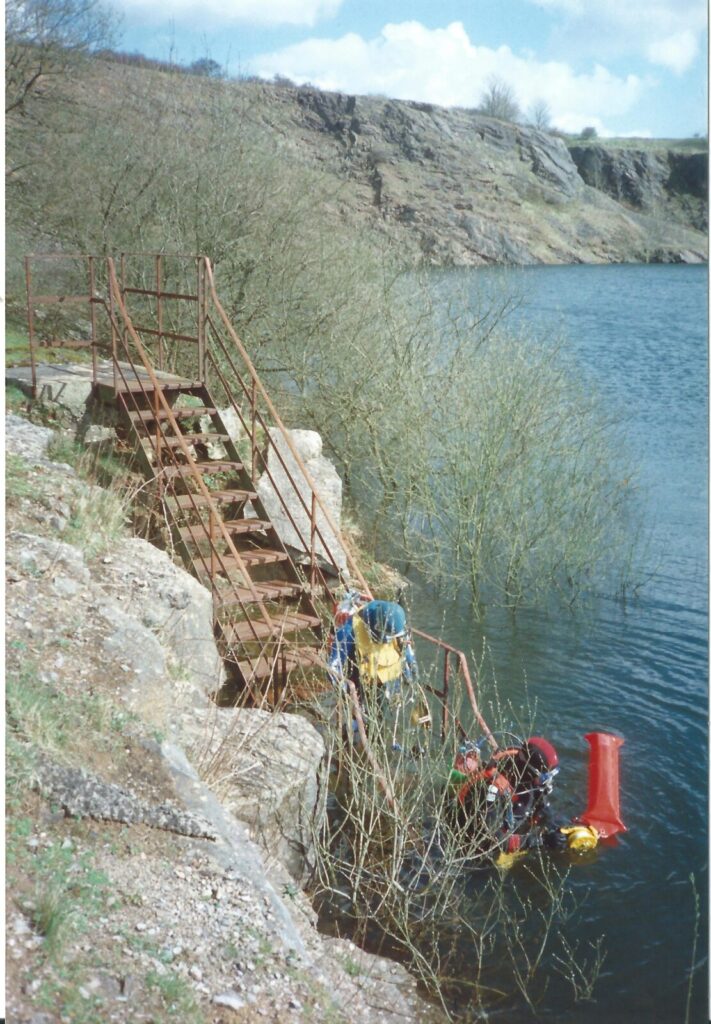
April of 1994 TIDSAC decided to take an inland dive-trip to Waterlip Quarry in Somerset, it was half the distance to Stoney Cove and that proximity, in the day, meant it was easier to get divers interested. I suppose I was lucky, Stoney was not so far out of the way for me and made a decent dive on the way back to Tidworth after weekends, or leave, spent with my then girl-friend Ellie and the family. Obviously those serving in Tidworth Garrison found no real benefit from such a long journey North, and the traffic on the return could be a pain too, after all, these were dives to be taken when the weather was blowing out South coast dives, which were obviously far more of a pull than a quarry dive!
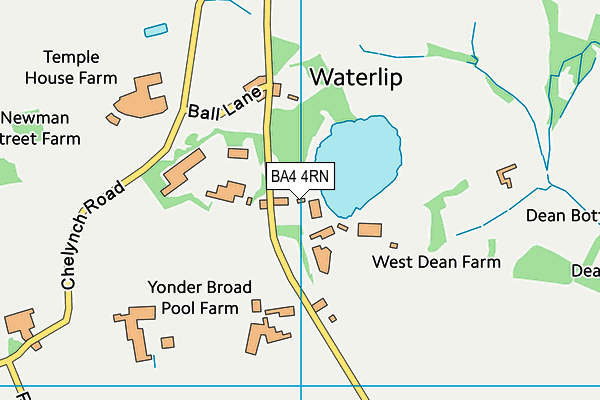
Waterlip Quarry is located near Cranmore, in Somerset, and is known locally more often as Cranmore Quarry, originating from around 1860, it was originally Two Quarries with a road between them but became One, larger, edifice somewhere around 1890. The quarry was extracting Carboniferous (Black Rock) Limestone, a product of Volcanic activity in pre-historic days, and a result of the “Coalbrookdale Formation” of Silurian Volcanic rock. Basically the debris from a huge volcano eruption which settled onto sea-water, and became layers of sediment (pumice) and pyroclastic flows over the existing bedrock. I am sure there will be geologists horrified by that very inadequate and basic description, but I’m not giving a geography lesson here, I trust I can be forgiven such basic ignorance……

The journey from Tidworth to Cranmore, in the Mendip Hills, takes around an Hour or so, a pleasant journey across to the West from Salisbury, and a picturesque one. It is hard to believe there was ever a Volcano, nor that the eruption of such a thing created the local landscape, no matter how long ago that might have been. But whatever it looked like, the strata of the local area was precious enough and plentiful enough to break it out from the ground to use and to sell. Most people have seen working quarries, or at least pictures of them, I personally like the historic images, the way things were achieved, before the introduction of modern commercial methodologies and massive plant equipment
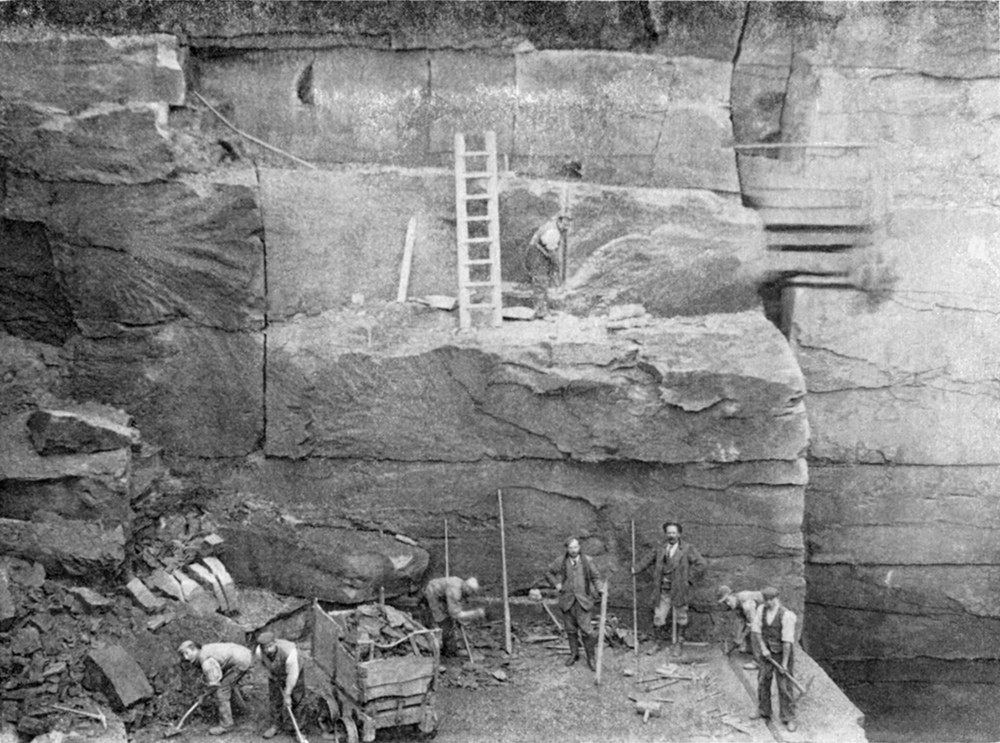
Waterlip is another quarry with a transportation story, similar to Stoney Cove’s….. The quarry owners found it difficult to get product to market, in a similar conundrum to that faced by those at Stoney Stanton, the original method being horse-drawn carts, with all the limitations implied by steep quarry access roads, and the energy available from the horses! The canals were little help, several canal ventures locally, the Nettle-bridge Valley & Radstock canals, failed, and the Somerset link to Kennet & Avon was too far North for the Mendip quarry production, so it wasn’t until the 1870’s that a rail network was established which opened up wider possibilities
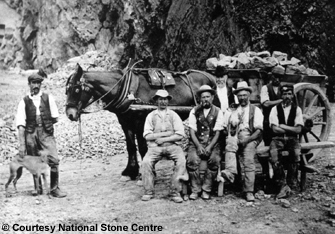
If nothing else, understanding the way rock is quarried, even back in the day, makes understanding the underwater topography (Bathymetry?) far better, and therefore aids navigation to some extent! I also love to see the “Health and Safety” of the day and reflect on what a “cotton wool” society we have become of late! Arriving at Waterlip you made your way over to the Quarry head, where there was a building and access (if there were divers there already), or, if I recall correctly, an improvised key-collection arranged beforehand. To be honest I’m not sure as to how that worked at the time, but the kitting up area was out of the weather, and clean with plenty of room, no luxuries, no shop, no cafe or bar, but it was out of the wind and comfortable!
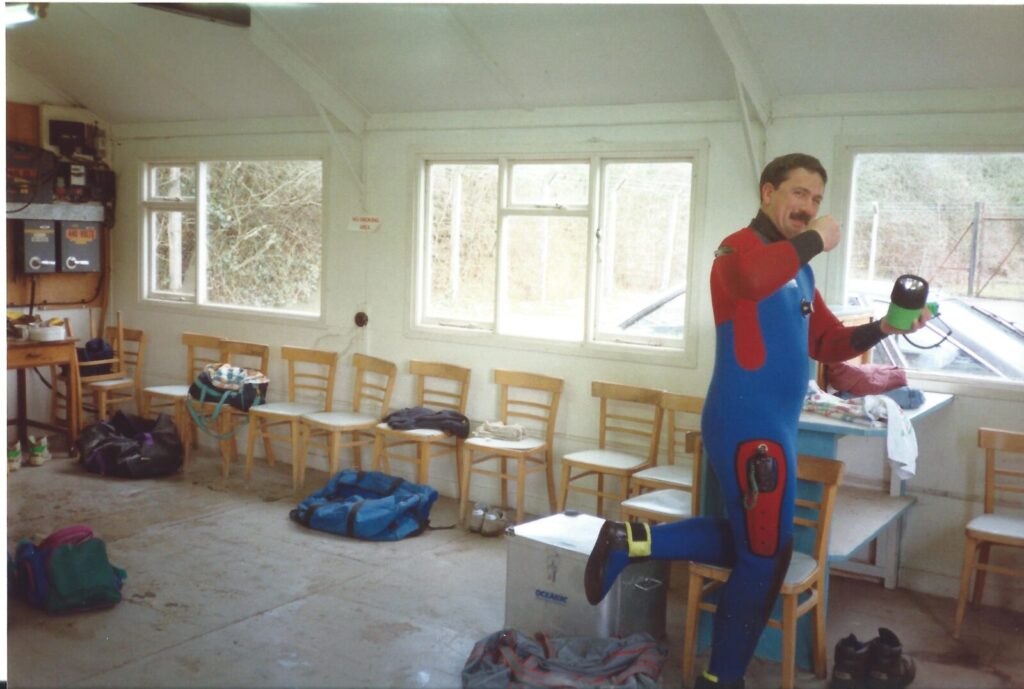
Access to the water is a different affair than elsewhere, there is a set of steel stairs, adequate but still slippy if you are not careful, and a series of pier affairs, at the time a legacy of military testing for acoustics and for early torpedo systems I believe. Nowadays they are owned, or at least operated, by Thales and likely still being used for similar purposes, knowing the areas of engineering Thales are mostly involved with….. We assembled our kit outside of the dressing rooms, and buddied up with those others that had joined us for the day. I was buddied with Adrian, the albeit temporary TIDSAC DO, Norman having been very glad to pass on that role for what he hoped might be at least a couple of years, but ended up more a couple of months due to Adrian’s onward posting
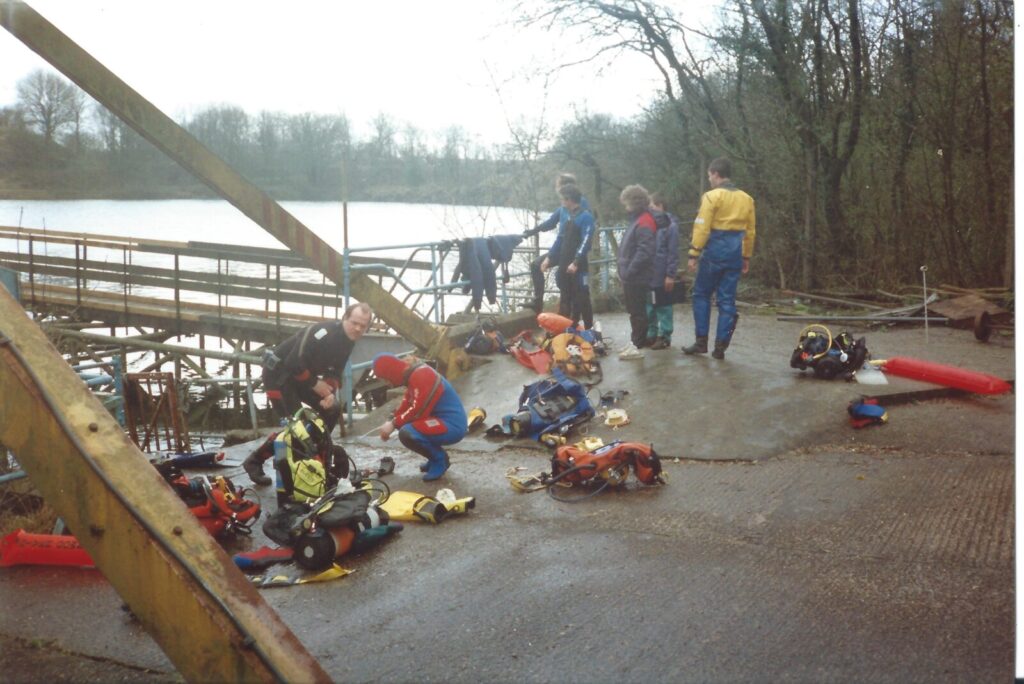
My log book records: “Inland dive, Waterlip Quarry Somerset, Cold & Dark, No Viz from 12m – Nothing to See, W. Temp 6′ Air in 200 – out 50 Viz 0.5m -nil Buddy Adrian” I clearly was not impressed on our first outing, and remember trying to find anything to guide navigation other than the quarry wall, which we eventually used to go around by putting it on our Left shoulder, and then at half the allotted air, turning about and putting it on our Right shoulder for the return journey…….and we saw nothing, it was an effort to keep in touch!
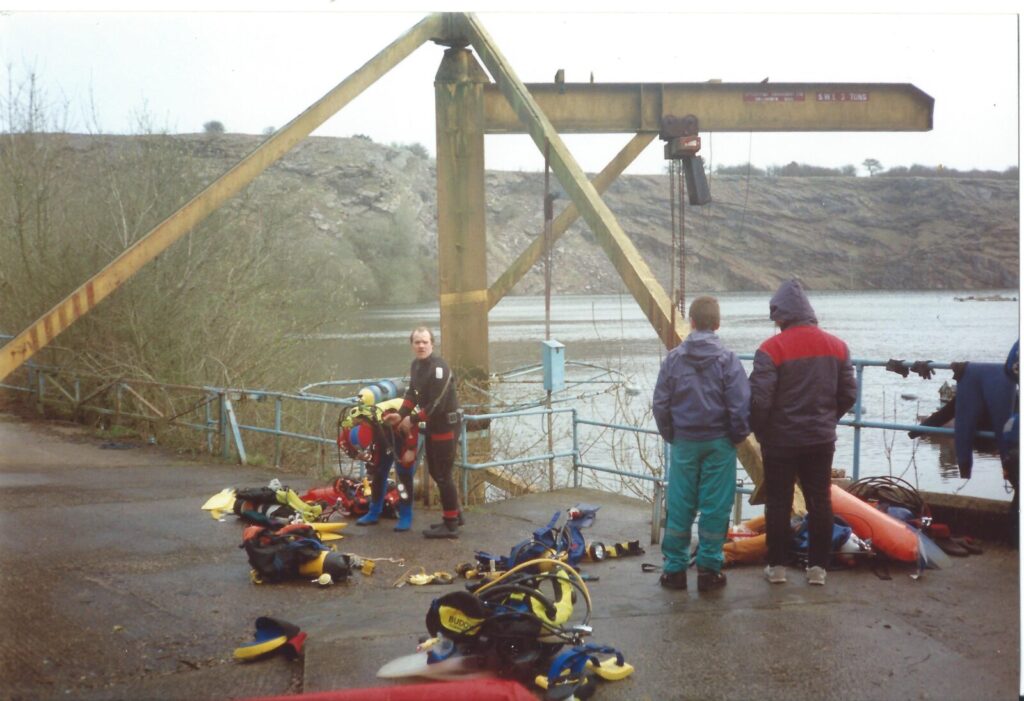
Undeterred we went back in for another try, determined to try a different tack and head out direct from the wall, all was going swimmingly, albeit in very similar visibility, until we reached bottom at around 15m when Adrian signaled he was in difficulty….. my log book again records the detail: “Inland- Waterlip Quarry Somerset, Dive to 15m – Adrian lost a fin – controlled buoyant lift from 15m for D/L qual otherwise same as above Air in 200 out 150 Viz 0.5m to Nil Buddy Adrian” I remember Adrian being pissed off at losing his fin, which we did manage to recover, but by then I think we’d both had about enough of the abysmal visibility and cold to push another attempt out. On this occasion Waterlip had beaten us, we’d seen precisely nothing………..

Back in the early 1970s, this quarry was not fenced off and anyone could go there. As a teenager I threw a large stone into its copper sulphate blue water and was mesmerised by the sound that indicated great depth. To this day in my bathroom there is a quartzite stalagmite that I liberated from that quarry. Life was more free and easy in those days.
Peter,
I recall when we visited we had to arrange the visit beforehand so the site were expecting us and to collect a key from the caretaker on the day so we could get in, it wasn’t an issue to dive there but access was by approval and I believe you had to be with a registered dive club, life was indeed a little easier back then, can’t imagine you’d be allowed to dive these days!
Around 1996., lovely sunny day and write-up in diver mag ,it was Sunday and to top it all we lived in Bristol, so a stones through…
Got the key of from someone in the village and off we went…
Eirie is not the word, it was almost a .horror story, no birds singing , deathly quiet on the surface on such a lovely daY .
. As the original storyteller, we had the same down to 12mtrs then lights out…Ray Charles could of seen more!! and to make matters worse only hand torches. total dive time was 7 minutes!! couldn’t wait to get out!
On surfacing another couple had also arrived from Bristol.,quick chat about what we had seen.,diddly, they had bigger lights, but they went down and up in less time than us..we all concluded we wont be back…assuming nothing changed in the last 20 od years.. Martin Cripps ex Bristol Scuba Centre
Martin,
I think the birds didn’t like Waterlip because of the occasional use of explosives there for the armaments work, I didn’t get the chance to go back there but wasn’t in a particular hurry either and moved back up North a short time after when I left the Army. It’d be an interesting return visit if I’m ever in the area assuming that’s still possible?